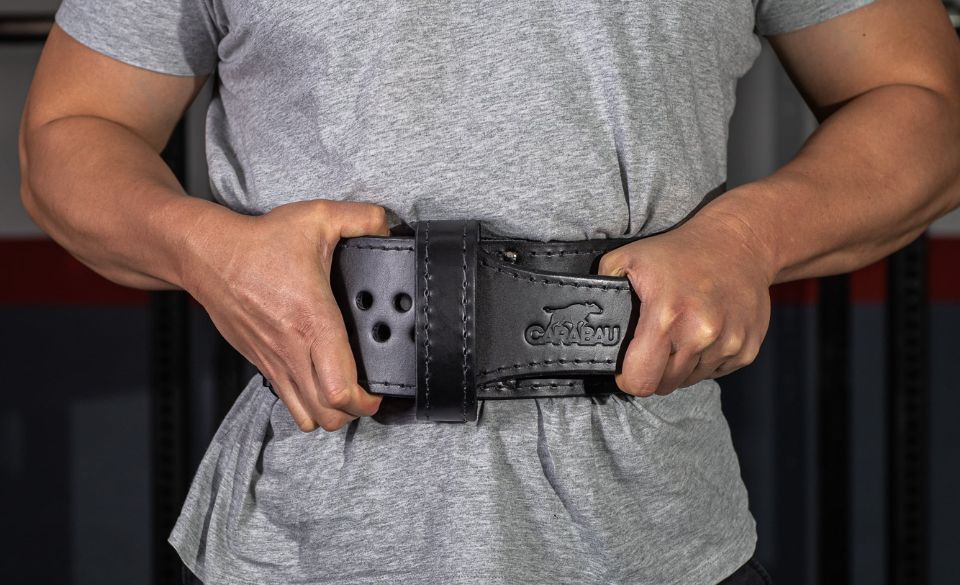
What Are The Different Types of Lifting Belts?
Upon walking into any weightlifting gym and most commercial ones, you will see many people wearing belts around their waists and tightening them up as they go into a lift. As a beginner or even intermediate lifter who’s never cared about lifting heavy weights, it’s quite normal not to understand what these belts are used for and why they’re so popular among many.
Well, in this short piece, we will help you learn just that – what lifting belts are, what they’re used for, who uses them, and what the different types are.
So, if that sounds like something that’s right up your alley, then let’s get started.
What Are Lifting Belts Commonly Used For?
In shops of fitness accessories, you will see more than one type of belt – there’s the nylon belt, a leather one, some come with a clickable opening, and others have the tightening mechanism of a classic belt, regardless of the material they’re made of and their clasp, the purpose of these belts remains one and the same.
Lifting belts are there to help you feel more stable during heavy lifts. They increase intraabdominal pressure and thus provide a stable surface against which your muscle can tighten and brace. What you get out of lifting with an engaged core is a neutral spine, a lower risk of hyperextending or rounding your back, and, of course, a lesser chance of injury.
Along with that, thanks to the belt, you’re essentially lifting with a more stable and secure torso, which can result in you being able to lift heavier weights.
With all that said, it’s crucial to point out that a lifting belt isn’t a quick fix for poor technique or a safety net against all kinds of injuries. In fact, it’s just an accessory that can help you supplement proper form, but learning to brace your core effectively (even without it) is crucial for safe and beneficial strength training.
4 Main Types of Lifting Belts?
As we already mentioned, there are many types of lifting belts that you can find on the market, and even though they’re meant to do one and the same thing, there are still slight differences you should be aware of.
Velcro Belts
Typically used by beginner lifters, they’re an economical option that’s easy to adjust, lightweight, and less bulky than all the other popular belts. With that said, they’re typically not as long-lasting or supportive as more expensive and thicker belts. Along with that, due to wear and tear, they start to lose their adhesiveness and become less and less useful the more you use them.
Single-Prong Belt
Likely the most popular type of belt for most lifters, it’s typically made out of leather or synthetic leather material. It is generally known for being comfortable to wear and not as thick as the double-prong variant. It’s easy to take off and put on while also providing enough support for your core and your back, thus giving you the desired stability and support without the extra bulk.
Double-Prong Belt
Similar to the single-prong belt, this one is also typically made out of leather or synthetic leather materials. However, its main advantage is that it’s generally more supportive. It’s used by most powerlifters, especially those that compete, as it gives you the most secure and stable feeling out of all the options we’re discussing. The only downside to this belt is that it can be a hassle to put on and take off while also feeling a little bit bulky, which may be uncomfortable if you have a smaller waist.
Lever Buckle Belt
Lever buckle belts are rising in popularity for many reasons – they’re supportive and easy to put on while also maintaining durability and high quality so that they last for a long time. In most cases, they’re made of real leather or thick nylon, a synthetic leather-like material that ensures they can provide the needed support and stability without being too bulky or uncomfortable to wear. These types of belts are usually worn by both weightlifters and powerlifters and are approved accessories for both, which makes them the ideal option for someone who’s just starting their lifting journey.
In Conclusion
The general idea of using a belt is to make it easier for your core muscles to contract and remain engaged while you lift. That, in return, helps your lifting results, as it allows you to lift heavier and makes it more natural to perform the movements with proper form. Having said that, what kind of belt you choose to use depends on your gym goals and lifting levels – for beginners who don’t plan on working up to really heavy weights, a simple velcro belt can do a fine job; however, if you’re truly getting into lifting and you want to keep improving, then one of the other options is likely to be better for you in the long run.

